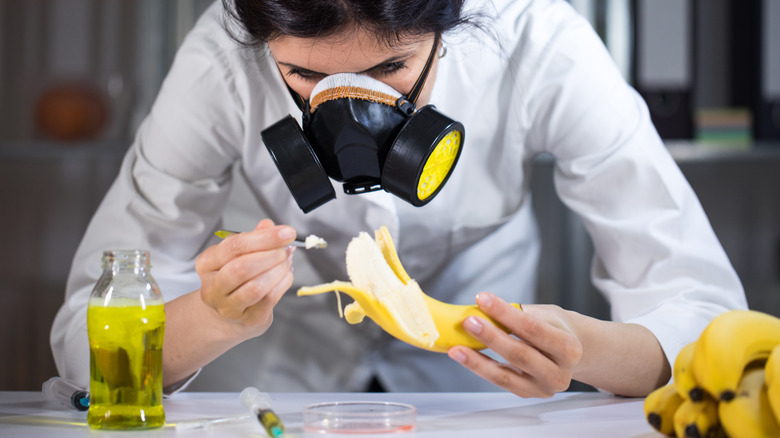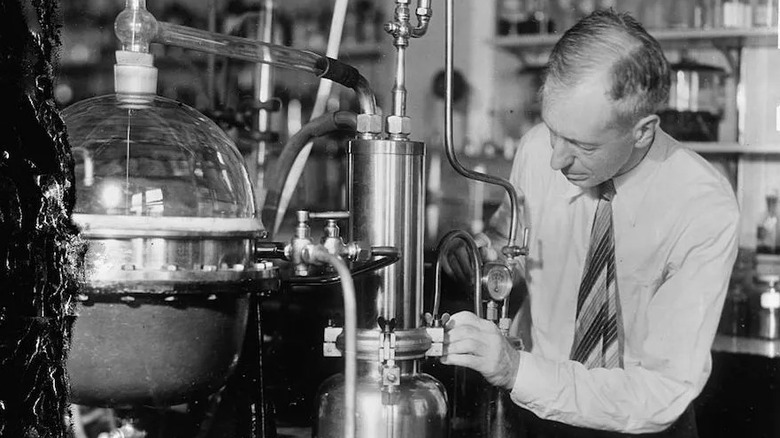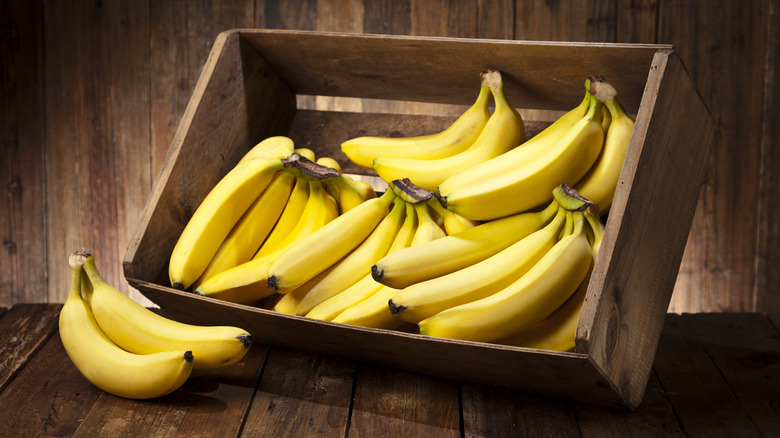The Scientific Reason Artificial Banana Flavor Tastes Wrong
While there aren't many artificial fruit flavors that can truly stand in for the real thing, banana flavor has a reputation for tasting the most "fake." Not that it doesn't have its fans; many people love the flavor in Laffy Taffy, as well as in all the other chewy candies that feature banana flavor. But you'd be hard-pressed to find anyone who can make a believable argument that artificial banana tastes anything like the real thing.
The scientific reason banana flavoring doesn't quite taste "right" has to do with the natural complexity of real fruits, which contain hundreds of compounds that combine to produce flavor. Oranges, for example, contain 250 natural compounds. Some are present in quantities only measurable in parts per million, or even parts per billion, but together they create the fruit's complex flavor profile.
Artificial flavors are created either in a lab or from natural chemical compounds in fruit. Simulating fruit flavor through artificial means is generally done using between three and 40 different compounds. A good artificial strawberry flavor will typically be produced by combining four to 12 different compounds. But the artificial banana flavor comes from just one compound called isoamyl acetate. And while this compound is the main thing that gives a real banana its flavor, without adding anything else, you get a pretty basic artificial taste.
Why can't we have a more complex artificial banana flavor?
This raises the question: If we know it takes multiple compounds to create a more realistic-tasting fruit flavor, why is isoamyl acetate used on its own to represent banana flavor? Why not add in some other compounds to introduce some subtlety and nuance?
Part of the answer has to do with the fact that it's easier and cheaper to simplify things. And apparently, nobody has felt the need to create artificial banana flavor in any other way, or it would have been done by now. In addition, you could chalk it up to habit. Isoamyl acetate was one of the first molecules to be synthesized for use as an artificial flavoring; and with its strong, fruity banana essence, early chemists seem to have decided that if one compound had a good enough resemblance to banana flavor, it was — well, good enough.
Artificial banana flavoring was used for candy and baked goods in the U.S. for at least a decade before actual bananas were introduced to Americans at the 1876 Philadelphia Centennial.
Sealed by nature in a portable package
The first banana widely available to consumers in the U.S. was the Gros Michel variety (sometimes referred to as the "Big Mike"). It became the gold standard for bananas because it was sturdier and easier to ship than other varieties. In the 1950s, however, crops were affected by a fungus called Fusarium oxysporum and the Cavendish variety of banana took its place in supermarkets.
There's an often-repeated story that the reason artificial banana flavor tastes so wrong is because it was based on the Gros Michel banana, and we're used to the flavor of the Cavendish. But the problem with that story is that it doesn't take into account that the isoamyl acetate used to create artificial banana flavor today is synthesized from modern bananas (or other ripening fruit) or created in a lab. A better banana flavor might be achieved if chemists opted to experiment with combining multiple flavor compounds.


